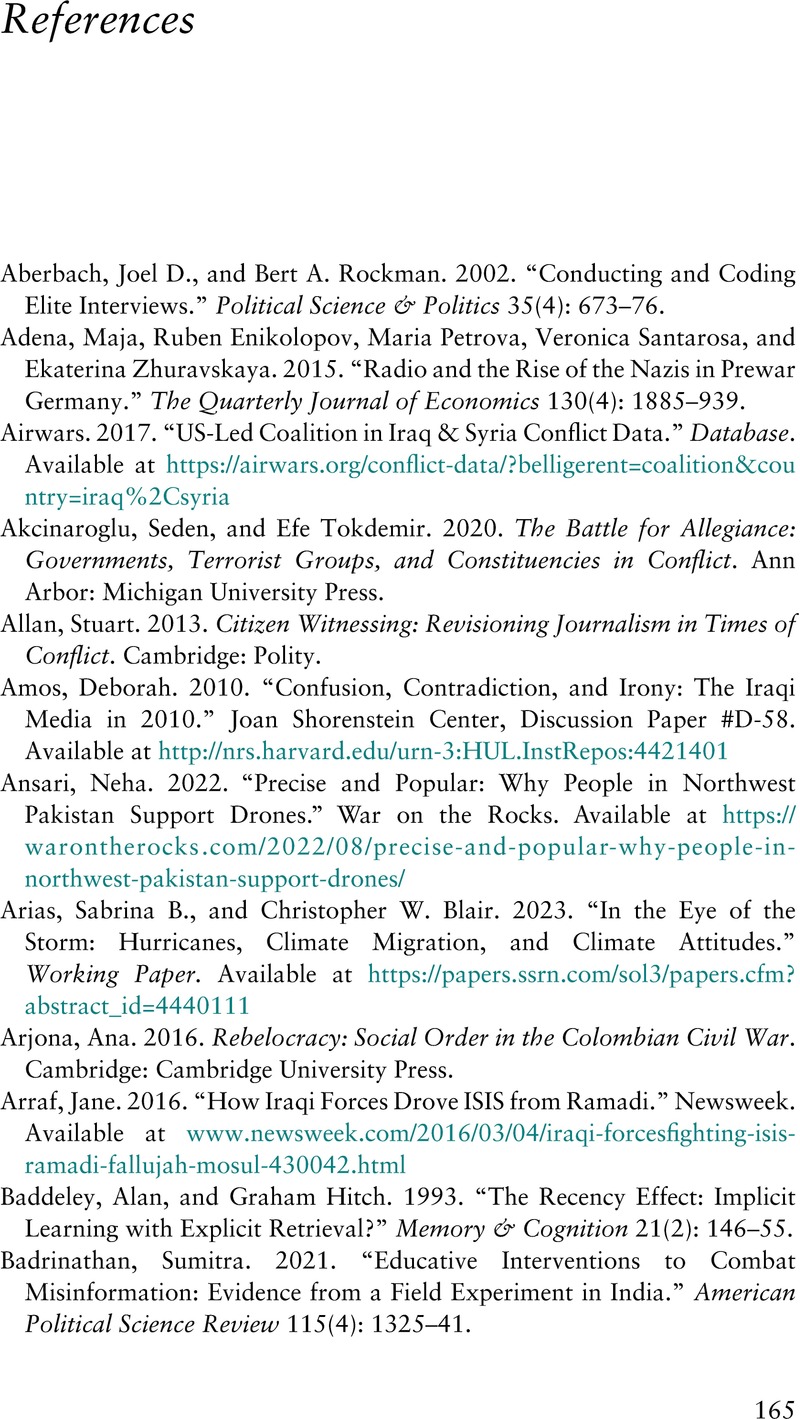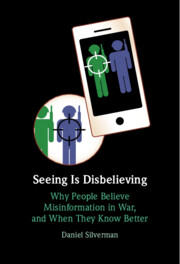Book contents
- Seeing Is Disbelieving
- Seeing Is Disbelieving
- Copyright page
- Dedication
- Contents
- Figures
- Tables
- Preface and Acknowledgments
- 1 Introduction
- 2 A Theory of People’s Factual Beliefs and Credulity in War
- 3 Factual Misperceptions in the US Drone Campaign in Pakistan
- 4 Proximity to the Fighting and the Puncturing of Factual Bias in Iraq
- 5 Truth Discernment and Personal Exposure in the Syrian Civil War
- 6 Understanding and Mitigating the Appeal of Falsehood in Wartime
- Appendix
- References
- Index
- References
References
Published online by Cambridge University Press: aN Invalid Date NaN
- Seeing Is Disbelieving
- Seeing Is Disbelieving
- Copyright page
- Dedication
- Contents
- Figures
- Tables
- Preface and Acknowledgments
- 1 Introduction
- 2 A Theory of People’s Factual Beliefs and Credulity in War
- 3 Factual Misperceptions in the US Drone Campaign in Pakistan
- 4 Proximity to the Fighting and the Puncturing of Factual Bias in Iraq
- 5 Truth Discernment and Personal Exposure in the Syrian Civil War
- 6 Understanding and Mitigating the Appeal of Falsehood in Wartime
- Appendix
- References
- Index
- References
Summary

- Type
- Chapter
- Information
- Seeing Is DisbelievingWhy People Believe Misinformation in War, and When They Know Better, pp. 165 - 180Publisher: Cambridge University PressPrint publication year: 2024



